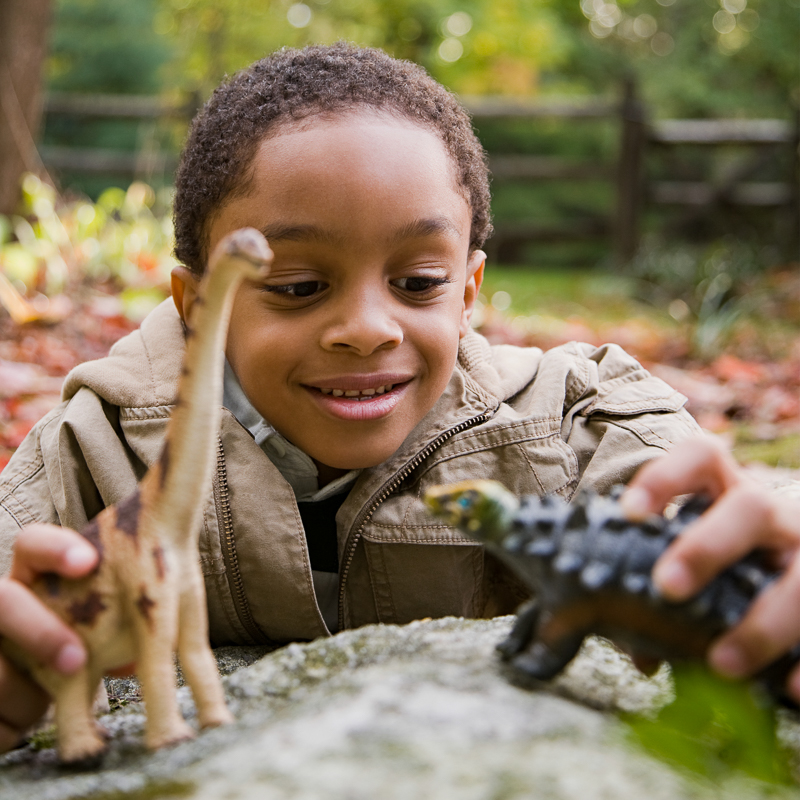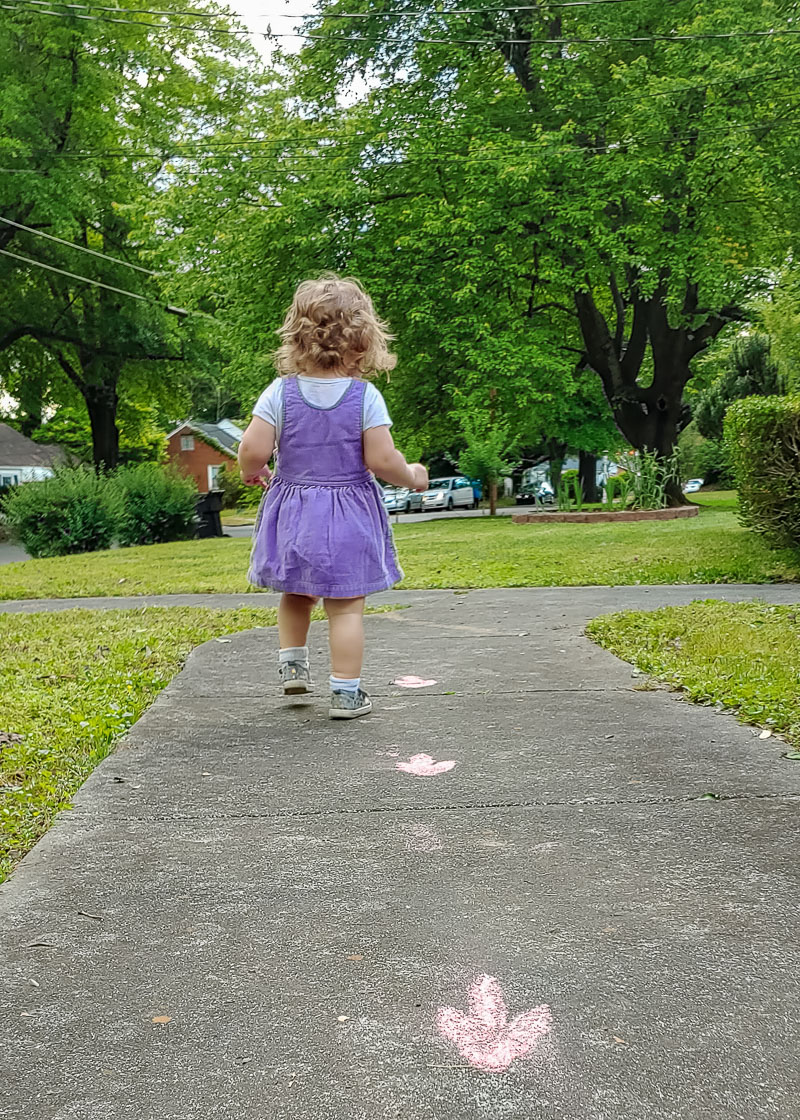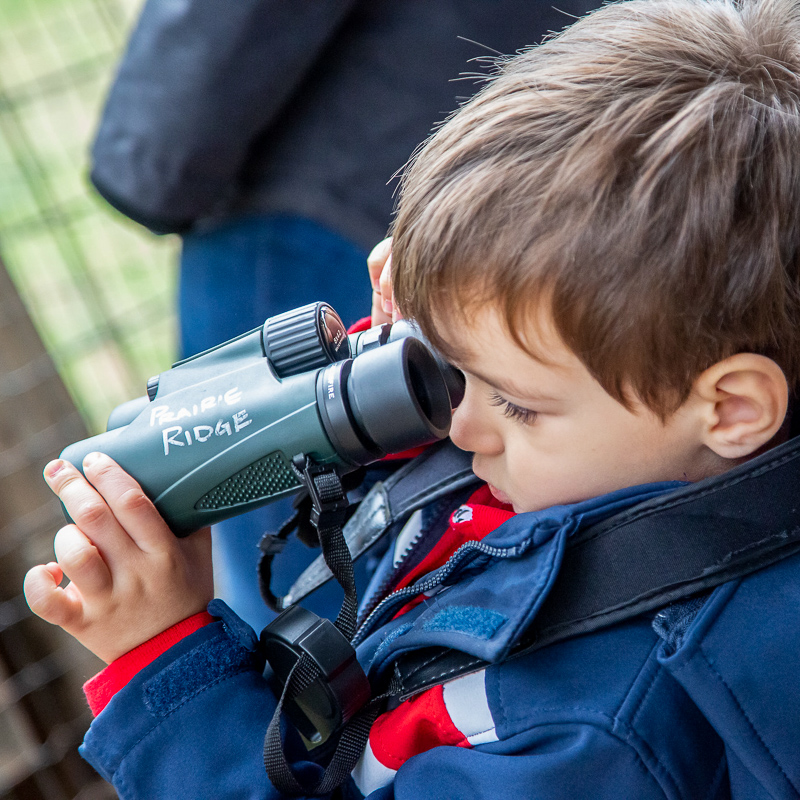What to Do: Bury your dinosaurs in the sand or in a dig box. With your child, don your paleontologist gear (optional bandana/hat) to get in the dino-digging spirit and use your dig tools to excavate your buried dinosaurs. See if your models make footprints when you press them into the sand. Bury and excavate again as long as children remain engaged.
Optional Extension: Read “Here We Go Digging for Dinosaur Bones” by Susan Lendroth before you do this activity.

What to Do: Have your child help you prepare some simple “herbivore” and “carnivore” snacks for you and your dinosaurs – for example, celery and peanut butter (or ranch dressing) for herbivores and pepperoni on crackers for carnivores. Take your snacks and plastic dinosaur guests outside and lay out your picnic blanket. Arrange your snacks so that herbivore and carnivore snacks are on separate sides of the blanket, then have your child arrange their guests so that each dinosaur is in reach of its favorite food. Enjoy your picnic with your dinosaur guests!
What to Do: Make some dinosaur trackways! If you are in an area with loose dirt, use a stick or just your fingers to trace around the dinosaur track template. If you are in a paved area trace around your template with chalk. The given template is for Grallator tracks, which should be arranged in a line as if on a tightrope. From the toe of one track to the heel of the next should be 25 inches; Either make tracks with your children or prepare a trackway ahead of time and go on a scavenger hunt following the tracks to plastic dinosaurs. You can have your child follow the tracks doing their best dinosaur impression by walking on their toes and holding their hands with their palms facing together as if clapping.

Best Age Range: 2 and up
Location: any large open space; a grassy field works well
Best Time: any time (when the ground is dry if you don’t want to get wet)
Season: all
Special Materials: measuring tape. Optional alternative: premeasured rope
What to Do: Go outside and measure out the lengths of different dinosaurs: three feet for Microraptor; six feet for Velociraptor; 30 feet for Triceratops or Stegosaurus; 40 feet for Tyrannosaurus; 120 feet for Argentinosaurus. You can make a dinosaur length rope ahead of time by marking the different lengths with tape on some rope. (You may want to wrap your premade rope around a wooden dowel for convenient use and to keep it from tangling.) Use your measuring tape or dinosaur rope to do some measuring activities. Have children walk along the rope heel to toe as if on a tightrope and count the steps it takes to traverse each dinosaur. For the longer dinosaurs, time how long it takes your child to run the length of the dinosaur and back. If you have a large group, lie down along the length of the rope to see how many people it takes to equal each kind of dinosaur.
Optional Extension: Read “How Big Were Dinosaurs” by Lita Judge before doing this activity.
What to Do: Take your child on a walk or sit in an area that has a lot of bird activity. See how many items on the bingo sheet you can find. If you are curious about the birds you’re seeing, the Merlin Bird ID app is a great resource.
Optional Extension: Read “Dinosaur Feathers” by Dennis Nolan before birdwatching to turn this into a game of Avian Dinosaur Bingo.
Activity field testing made possible in part by a PNC Grow up Great grant, an early childhood initiative designed to help prepare children for success in school and life.
